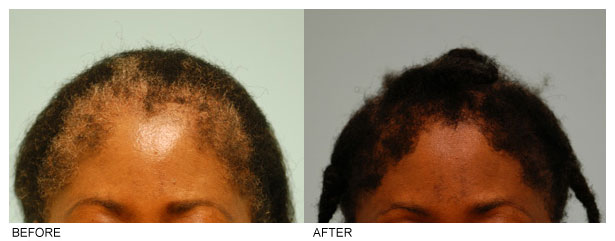Understanding Traction Alopecia and The Role of Hair Restoration
Traction alopecia refers to hair loss that arises from hair being pulled too tightly for too long causing permanent destruction to that hair. Most typically, this condition is caused by tight hair braiding, as seen more commonly in African-American women. Fortunately, this kind of hair loss is known as a non-scarring type of hair loss, i.e., the damage is only to the lost follicle and not to the surrounding skin. Therefore, hair restoration for traction alopecia is highly successful.
Traction alopecia oftentimes affects the temple hair where a woman will tie back her hair causing loss of blood supply to this temple fringe. In men who are Sikh, the hair loss can be circumferential around their head since their religion does not permit them to cut their hair and they must tie it up to be covered by a turban. Accordingly, the tension is greatest to the hair around the periphery of the knot causing this unusual pattern. Obviously, this is not a problem until they want to remove their turban when they abandon their religion.

Traction Alopecia Correction through Hair Transplant in an African-American Female
However, the most common indication still remains hair restoration for African-American women in the temple region. Although donor hair density is typically low in Africans, the hair curl covers quite a bit of surface scalp distance. Therefore, it is not as critical to dense pack the area when transplanting for traction alopecia. I have found that transplantation for traction alopecia works very well with a high patient satisfaction.
Samuel M. Lam, MD, FACS, a board certified hair transplant surgeon in Dallas, Texas. To learn more about Dr Lam’s African hair restoration procedures and African hair loss disorders, or to schedule a consultation please call 972-312-8105, or visit hairtx.com for more info. To ask Dr Lam a question please visit our hair transplant forum.




